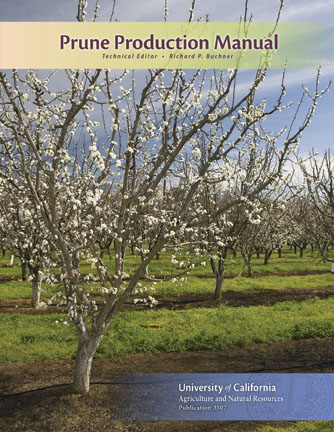Bayer purchases AgraQuest
Bayer Crop Science, headquartered in Germany, has purchased the U.S. biological crop-protection company AgraQuest, Inc., for $425 million plus milestone payments, according to a Bayer news release.
AgraQuest, headquartered in Davis, California, is a global supplier of biological pest management products derived from natural organisms. Its production facility is located in Tlaxcala, Mexico.
The acquisition expands Bayer’s existing biological pest control portfolio, and the promising research and development pipeline of AgraQuest will help Bayer CropScience to bring a new generation of products to the market, the release stated.
AgraQuest’s chief executive officer Marcus Meadows-Smith said that by joining forces with Bayer CropScience, AgraQuest should be able to develop revolutionary tailor-made biological solutions. Its current products include Serenade, Rhapsody, Sonata, and Ballard fungicides and Requiem insecticide.
New codling moth virus registered
Arysta LifeScience has announced that its Carpovirusine evo2 has been registered in France for control of codling moth. Following the discovery of resistance to the original codling moth virus, Carpovirusine 2000, in organic orchards, Arysta worked with French research agencies to find a new isolate of the virus, which has a slightly different mode of action from the original one.
Field tests in France and Italy show that Carpovirusine evo2 is more effective than Carpovirusine 2000 on resistant codling moth populations, and equally effective on sensitive populations, according to information from Arysta, which recommends alternating Carpovirusine evo2 with Carpovirusine 2000 for resistance management. The viruses are designed to be used in conjunction with mating disruption.
Carpovirusine 2000 is effective against oriental fruit moth as well as codling moth. French authorities have approved extended uses for the product. It is now approved on apple (for codling moth and oriental fruit moth control), pear, quince, and nashi (codling moth), peach (oriental fruit moth), and walnut (codling moth).
For more information about Arysta LifeScience, check the Web site www.arystalifescience.com.
Juice futures
After several years of study and preparation, trading of apple juice concentrate futures contracts and options began August 13.
Apple juice concentrate joins hard red spring wheat and some other commodities in which the MGEX (Minneapolis Grain Exchange) has organized trading.
The new contract was developed by MGEX after the company determined it would be useful to producers and buyers of apple juice concentrate, allowing them to manage their price risk and protect themselves from adverse cash price movements in what has been a volatile market.
The contract is also expected to provide transparency in the price discovery process. The U.S. Department of Agriculture is involved, reporting weekly cash market prices and taking part in the sample and testing of product. Approved warehouses are required to report their stocks.
MGEX established the contract size (1,800 gallons) and other specifications, including acid and Brix levels, delivery locations (although delivery on futures contracts rarely occurs), and trading times.
Trading hours are 7 a.m. to 1:10 p.m. Central time weekdays on the CME Globex trading platform. Reduced exchange rates were offered—free to MGEX members, $1 per trade for nonmembers—for the first two months of the new contract.
“MGEX is pleased to be able to offer this new risk management product for the AJC industry,” said Georgette McDonald, director of business services and product development for MGEX.
For more information, go to www.mgex.com.
All about prunes
 All prunes are plums. But not all plums are prunes.
All prunes are plums. But not all plums are prunes.
We learn that in the second sentence of a new book Prune Production Manual, edited by Richard Buchner and published by the University of California.
Already in the first sentence we learn why. “Prunes are varieties of European plum that can be satisfactorily dried whole without fermenting at the pit.” They have a high sugar content that makes it happen.
After years of being promoted for their laxative qualities, prunes have an image problem for modern consumers, so the preferred name these days is dried plums. That’s a marketing strategy. But this is definitely a book for industry people, not consumers, and the book calls a prune a prune.
Almost all U.S. prunes are grown in California, where the industry took root around 1850. Louis Pellier, a French horticulturist who came to California in search of gold, introduced the prune to the state when he established an orchard and nursery. France was the world’s leading producer of dried fruit at that time.
Today, California has about 70 percent of the world market for prunes (estimated at 250,000 to 275,000 tons), and France is the state’s largest competitor with 15 to 20 percent of world production.
Until the 1920s, most prunes were made by sun-drying, but today they are dried in heated, forced-air dehydrators, which in less than a day reduce moisture content to a storage-stable 18 to 22 percent.
The new production manual, written for prune growers around the world, is designed to replace Prune Orchard Management, printed in 1981. Chapters cover every aspect of production, plus an industry overview; a detailed description of prune biology; information on soils, varieties, irrigation and fertilization, and pest management techniques; and a chapter on harvest and postharvest management.
The manual has 320 pages, along with more than 300 photos and 56 color illustrations. The chapters were written by more than 40 faculty and extension specialists at the University of California, U.S. Department of Agriculture scientists, and prune industry experts. Buchner, the editor, is extension farm advisor in Tehama County.
The manual can be ordered online for $45. Volume discounts apply. To order, visit the Web site www.ucanr .edu/prune or call (800) 994-8849. A promotional video is available on the Web site.

Leave A Comment